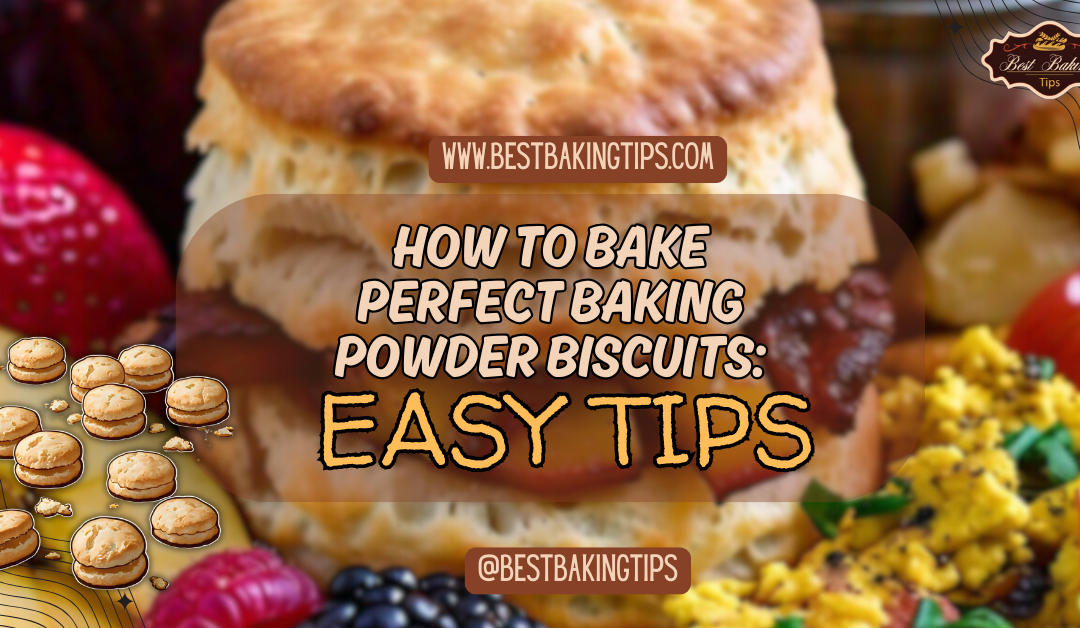==================
Affiliate Statement
Best Baking Tips is supported by our audience. When you purchase through one of our links, we may earn a small affiliate commission. As an Amazon Associate I earn from qualifying purchases. Your cost is not affected.
==================
Perfect baking powder biscuits are more than just a delicious addition to the table; they’re a warm, fluffy comfort that’s surprisingly easy to make. There’s something special about pulling apart a fresh biscuit, each layer ready to soak up butter, jam, or honey. Not only do these biscuits make any meal feel cozier, but they’re also a fantastic way to bring people together—perfect for family breakfasts, holiday gatherings, or even as a savory side to a hearty stew. And the best part? Making them at home is simpler than you might think! I’ll walk you through a few easy techniques to create biscuits that rise high, stay light, and have that irresistible flaky texture. Read on for all the tips you’ll need to bake biscuits that are bound to impress!
How to Bake Perfect Baking Powder Biscuits
I love biscuits! But often new biscuit bakers end up making hockey pucks instead of fluffy, flaky biscuits that rise to new heights. I’ve found the secrets to making these biscuits that just come apart in layers, begging for that dollop of jam.
Baking powder biscuits are a classic comfort food that brings back warm memories of family gatherings and cozy breakfasts. I’ve always loved the smell of freshly baked biscuits wafting through the kitchen. There’s something magical about transforming simple ingredients into fluffy, golden treats.
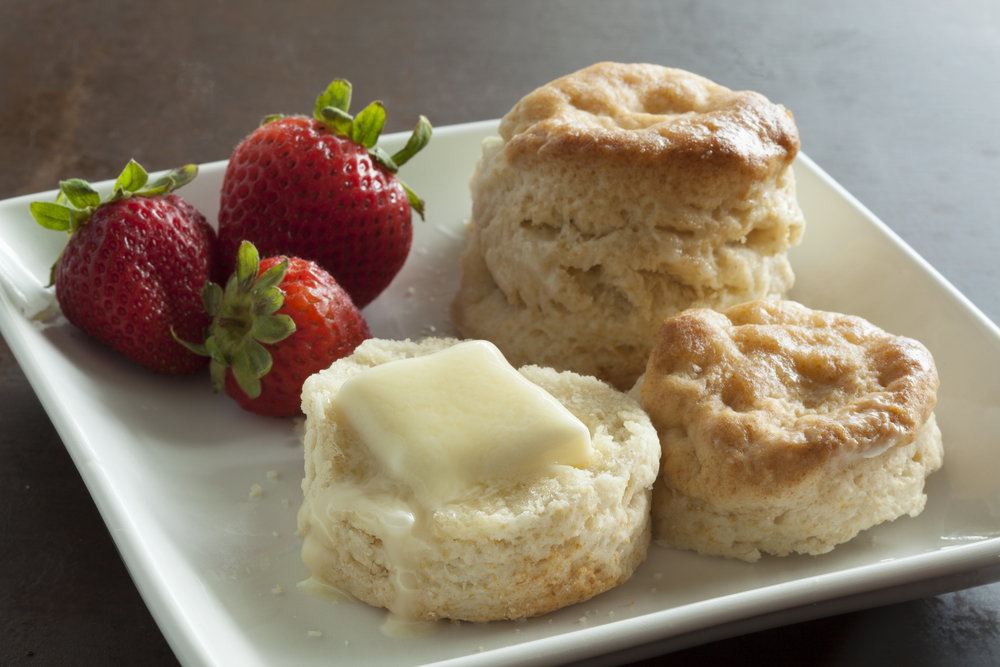
To make perfect baking powder biscuits, you need to mix cold butter into dry ingredients, then gently stir in milk until a soft dough forms. I’ve found that using a light touch when handling the dough is key to achieving that coveted flaky texture. It’s also important to avoid overworking the dough, which can lead to tough biscuits.
I’m excited to share my tips for baking powder biscuits that turn out light and airy every time. With a few simple techniques, you’ll be able to whip up a batch of homemade biscuits that rival any bakery’s offerings. Let’s dive into the world of biscuit-making and create some mouthwatering treats together!
Key Takeaways
- Cold ingredients and gentle mixing create light, flaky biscuits
- Proper cutting and shaping techniques improve texture and rise
- Baking at a high temperature ensures golden-brown perfection
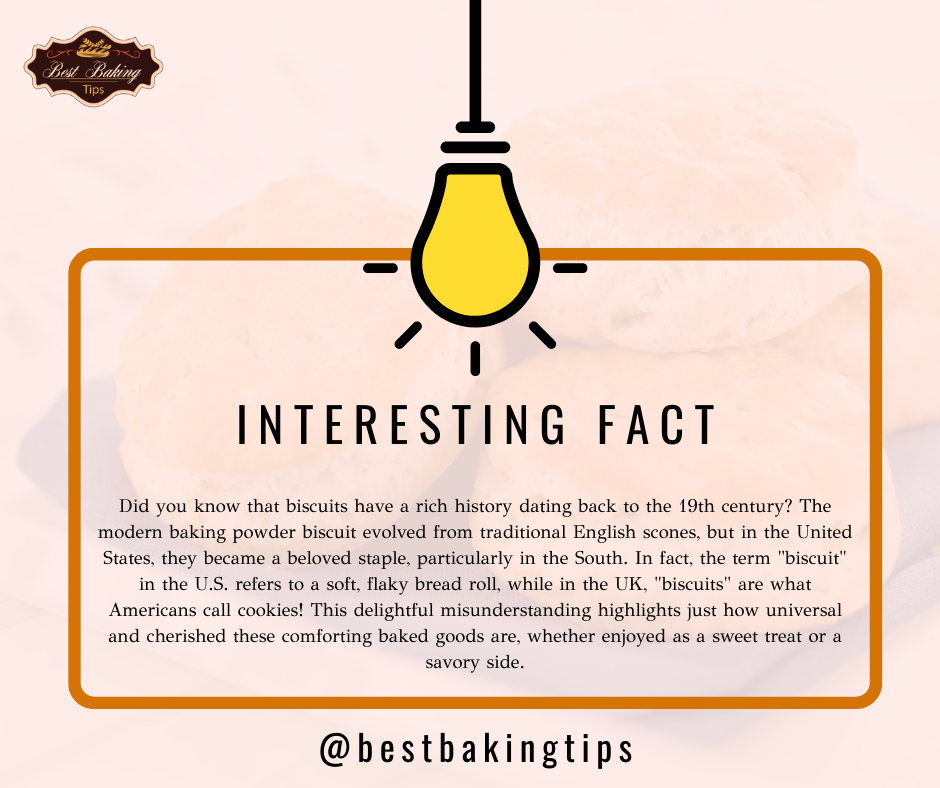
Understanding Baking Powder
Baking powder is a key ingredient in making perfect biscuits. It helps them rise and become fluffy. There are different types of baking powder, and each works in its own special way.
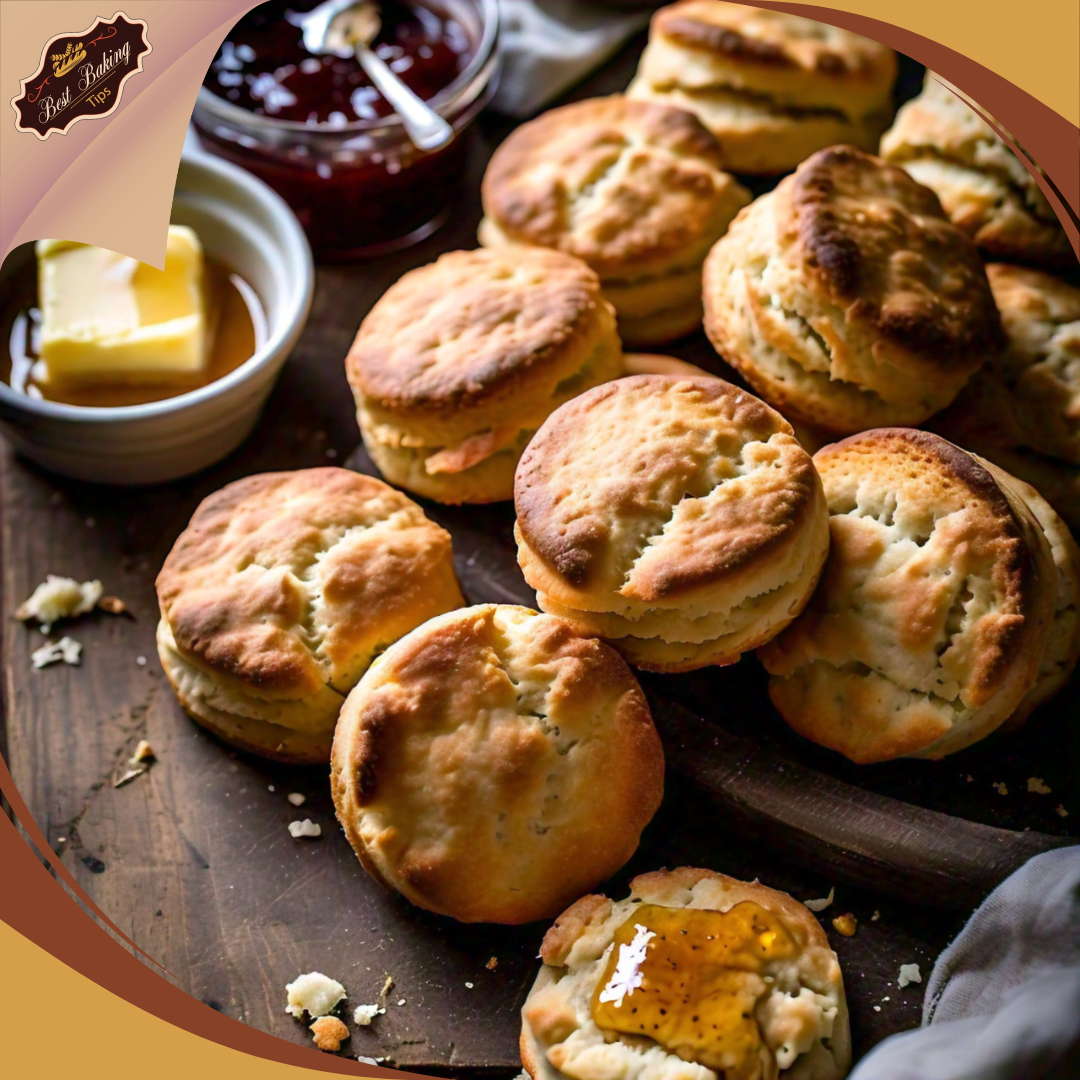
Roles and Reactions
Baking powder makes my biscuits light and airy. It’s a mix of baking soda, cream of tartar, and sometimes cornstarch. When I add liquid to my dough, the baking powder starts to work. It makes tiny bubbles that help the dough rise.
There are two main times baking powder works:
- When it gets wet
- When it gets hot in the oven
This double action is why many bakers, including me, love using it. It gives my biscuits a nice lift and texture.
Type Variations
I’ve found there are a few types of baking powder to choose from:
- Single-acting: Works when wet
- Double-acting: Works when wet and when heated
- Aluminum-free: Uses different acids, may affect taste
I usually pick double-acting for my biscuits. It gives me more time to work with the dough before baking. Some bakers prefer aluminum-free for a cleaner taste.
The shelf life of baking powder is important too. I always check if mine is still good before using it. A quick test: put a teaspoon in hot water. If it fizzes, it’s still good to use!
Choosing Ingredients
Picking the right ingredients is key to making tasty biscuits. I’ll share my tips for selecting flour, fats, milk, and seasonings that’ll take your biscuits to the next level.
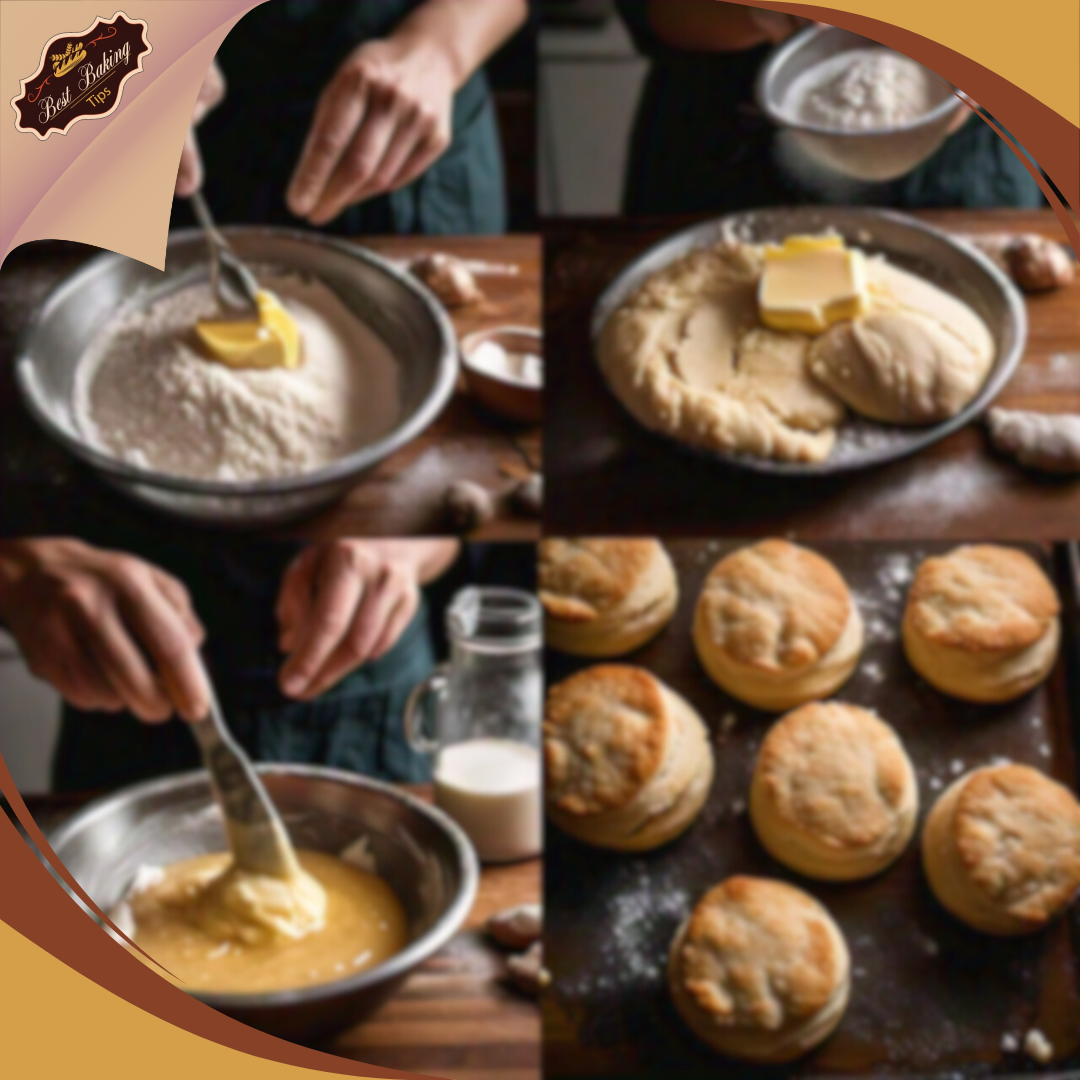
Flour Types
For the best biscuits, I always start with all-purpose flour. It’s my go-to because it has just the right amount of protein for fluffy yet sturdy biscuits. Sometimes I mix in a bit of cake flour for extra tenderness.
If you’re after a healthier option, whole wheat pastry flour can work too. It gives a nutty flavor and more fiber. For gluten-free biscuits, I use a mix of rice flour, potato starch, and xanthan gum.
Remember, the type of flour affects texture. Too much protein and your biscuits might be tough. Too little and they could fall apart.
Fat Selection
Choosing the right fat is crucial for flaky biscuits. I love using cold butter for its flavor and ability to create layers. Cutting in shortening until the mixture looks like coarse crumbs helps too.
For extra richness, I sometimes use salted butter. If you do, just cut back on the added salt in your recipe. Lard is another option that makes super flaky biscuits, but it’s not for everyone.
Whichever fat you pick, keep it cold! I even chill my bowl and utensils. This helps create those coveted flaky layers we all love.
Milk and Alternatives
Milk adds moisture and helps bind the dough. I usually reach for whole milk because its fat content contributes to a tender crumb. Buttermilk is my secret weapon for tangy, fluffy biscuits.
If you’re out of buttermilk, mix a tablespoon of lemon juice or vinegar with a cup of milk. Let it sit for 5 minutes before using. For dairy-free options, I’ve had success with unsweetened almond or oat milk.
The key is to add just enough liquid. Too much and your dough will be sticky. Too little and it’ll be dry and crumbly.
Sweetness and Seasoning
A touch of sweetness balances the flavors in biscuits. I usually add a tablespoon of sugar to my dry ingredients. For a deeper flavor, try brown sugar or honey.
Salt is crucial too. I prefer kosher salt for its clean taste. About 1/2 teaspoon per cup of flour is my rule of thumb. If you’re using salted butter, cut back a bit.
For savory biscuits, I love adding herbs or cheese. A pinch of black pepper can add a nice kick. Remember, seasoning is personal. Start with a little and adjust to your taste.
Preparing Your Space and Tools
Getting ready to bake perfect biscuits starts with setting up your kitchen. I’ll walk you through the key steps to create an ideal baking environment and gather the right tools.
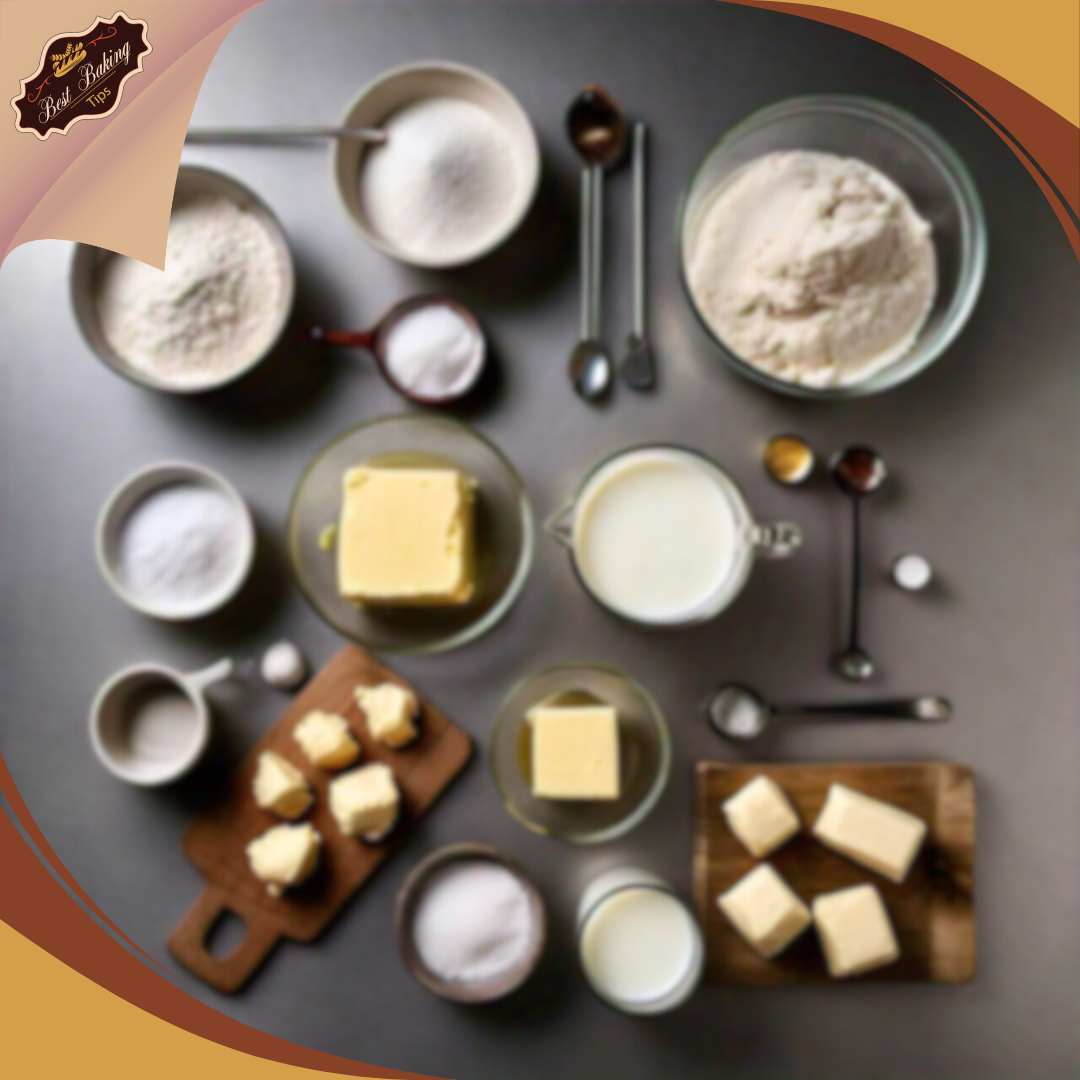
Workspace Setup
First, I clear my countertop to make plenty of room. I wipe it down with a clean cloth to remove any crumbs or debris. A clean surface is crucial for rolling out dough.
Next, I lay out a piece of parchment paper on my work area. This makes it easier to transfer the biscuits to a baking sheet later.
I also like to set out a small bowl of flour nearby. This comes in handy for dusting my hands and tools to prevent sticking.
Oven Preparation
Preheating the oven is a key step I never skip. I usually set it to 450°F (230°C) for biscuits.
I make sure to position the oven rack in the center. This helps the biscuits bake evenly.
If I have one, I’ll place a pizza stone on the rack while the oven preheats. This gives the biscuits a nice crisp bottom.
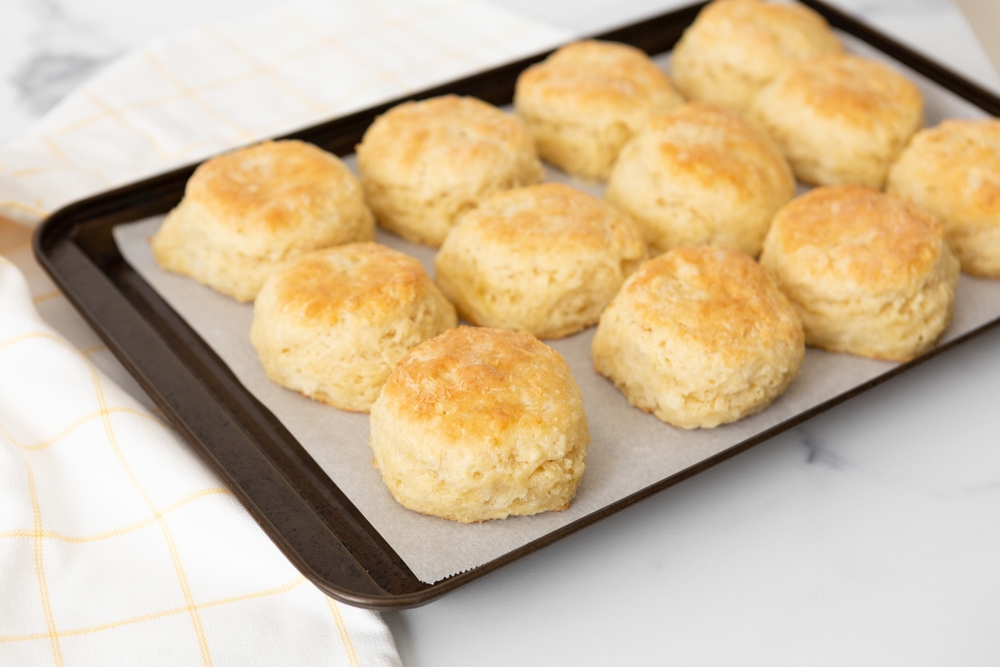
Tool Essentials
My must-have tools for biscuit-making include:
- Large mixing bowl
- Pastry cutter or two forks
- Biscuit cutter or a sharp-edged glass
- Rolling pin
- Baking sheet
- Measuring cups and spoons
I always make sure these tools are clean and dry before I start. For cutting in butter, a pastry cutter works best, but two forks can do the job too.
A biscuit cutter gives me perfectly round shapes. If I don’t have one, a clean, empty can works great.
Mixing the Dough
Let me show you how to mix biscuit dough for perfect results. I’ll cover the key steps to combine dry ingredients, work in the fat, and add liquids.
Dry Ingredient Techniques
I start by whisking the dry ingredients together in a large bowl. This includes flour, baking powder, salt, and sugar. I use a whisk or fork to blend everything evenly.
It’s important to aerate the flour mixture. This helps create light, fluffy biscuits.
I sometimes sift the ingredients, but whisking works well too. The goal is to remove any lumps and distribute the leavening.
Incorporating Fats
Next, I cut in cold butter or shortening. I use a pastry blender or two knives to work the fat into pea-sized pieces.
Cold fat is key for flaky biscuits. I make sure not to overwork the dough.
Some bakers grate frozen butter into the flour. This creates tiny pockets of fat that make extra flaky layers.
I aim for a coarse, crumbly texture. The mixture should look like small pebbles when ready.
Adding Liquids
Finally, I pour in cold milk or buttermilk. I use a fork to gently stir until the dough just comes together.
I avoid overmixing, which can make tough biscuits. The dough should be shaggy and a bit sticky.
If needed, I add more liquid a tablespoon at a time. The goal is moist dough that holds together but isn’t too wet.
I give the dough a few quick kneads to bring it together. Then it’s ready to shape and bake into perfect biscuits!
Shaping and Cutting Biscuits
I’ve found that shaping and cutting biscuits properly is key to getting flaky, high-rising results. Let me share some tips I’ve learned for rolling out the dough, using the right cutting techniques, and handling those scraps.
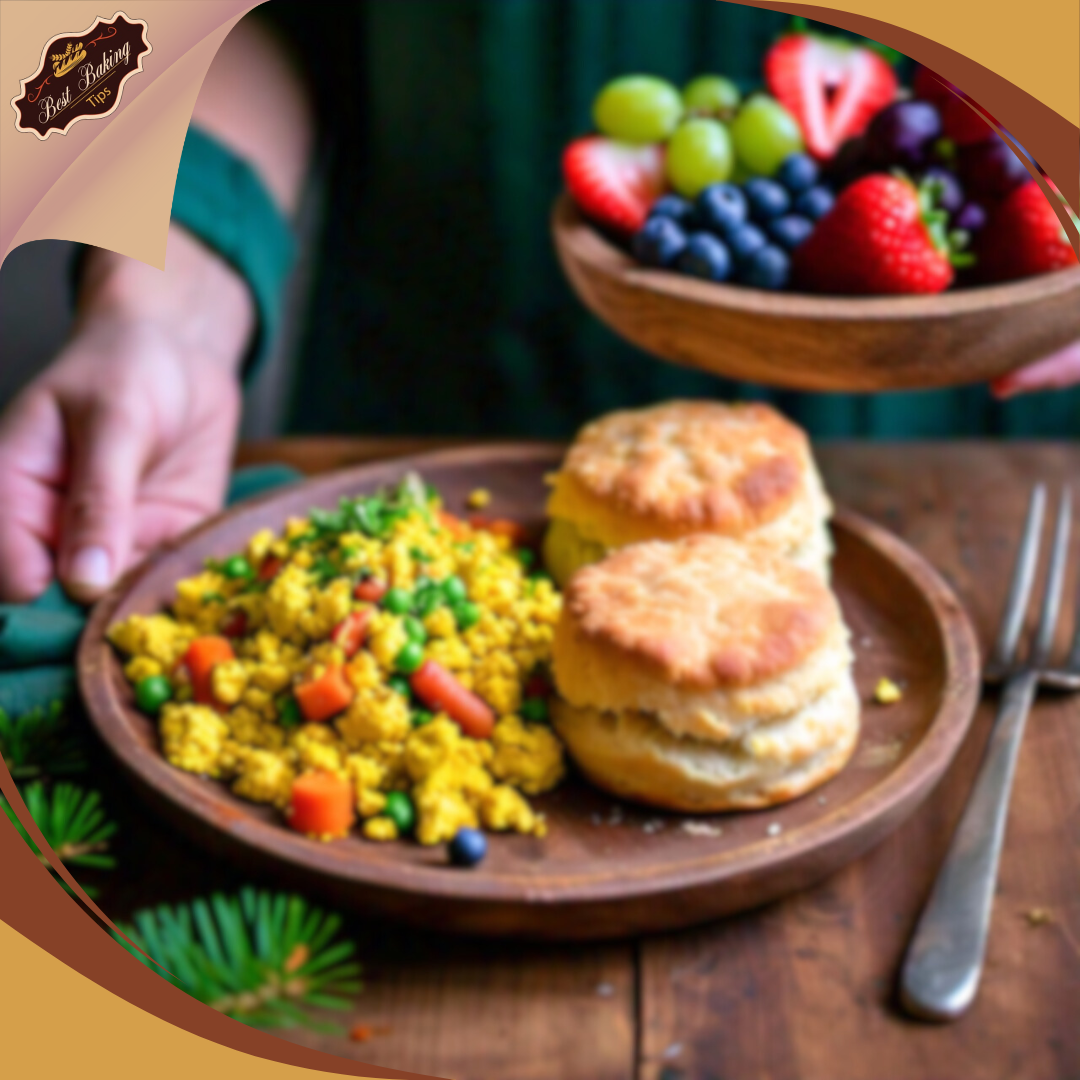
Rolling and Thickness
When I’m ready to shape my biscuits, I start by gently patting the dough into a rough rectangle on a lightly floured surface. I use a rolling pin to roll it out to about 1/2 inch thick.
I try not to overwork the dough. Too much handling can make tough biscuits.
I also make sure to roll evenly. Uneven thickness leads to some biscuits rising more than others.
Cutting Techniques
For cutting, I use a sharp biscuit cutter. I push it straight down into the dough and lift it back up without twisting.
Twisting seals the edges and can prevent the biscuits from rising as high.
For square biscuits, I use a sharp knife to trim the edges of my dough rectangle. Then I cut it into even squares.
I place the cut biscuits close together on the baking sheet. This helps them rise up instead of spreading out.
Handling Scraps
After cutting out as many biscuits as I can, I’m left with scraps. I gently press these together and re-roll them.
I try to handle the scraps as little as possible. Too much re-rolling can make tough biscuits.
I usually get 2-3 more biscuits from the scraps. These might not rise quite as high as the first batch, but they’re still tasty!
Any tiny bits of dough left over, I bake alongside my biscuits. They make great little snacks.
Baking the Biscuits
I’m excited to share my tips for baking perfect biscuits! The right oven settings, timing, and handling make all the difference in getting flaky, golden results.
Oven Settings
I always start by preheating my oven to 425°F (220°C). This high heat is key for creating those flaky biscuits we all love. I make sure my oven rack is in the middle position.
Before baking, I line my baking sheet with parchment paper. This prevents sticking and makes cleanup a breeze. If I don’t have parchment, I lightly grease the sheet instead.
I like to place my biscuits close together on the sheet. This helps them rise up instead of spreading out. About 1/2 inch apart is perfect.
Baking Time and Temperature
I pop my biscuits into the preheated oven and set a timer for 12 minutes. At this point, I check on them. They should be lightly golden on top.
If they need more time, I give them an extra 2-3 minutes. The total baking time is usually 12-15 minutes.
I avoid opening the oven door too often. This can cause temperature fluctuations and affect the rise of my biscuits.
Post-Bake Handling
Once my biscuits are done, I take them out right away. Leaving them in a hot oven can lead to overbaking.
I let the biscuits cool on the baking sheet for about 5 minutes. This helps them set up a bit.
Then, I transfer them to a wire rack. This prevents the bottoms from getting soggy.
For the best taste, I serve my biscuits warm. There’s nothing quite like biting into a fresh, warm biscuit!
If I’m not eating them right away, I store them in an airtight container. They’ll stay fresh at room temperature for a day or two.
Variations and Accompaniments
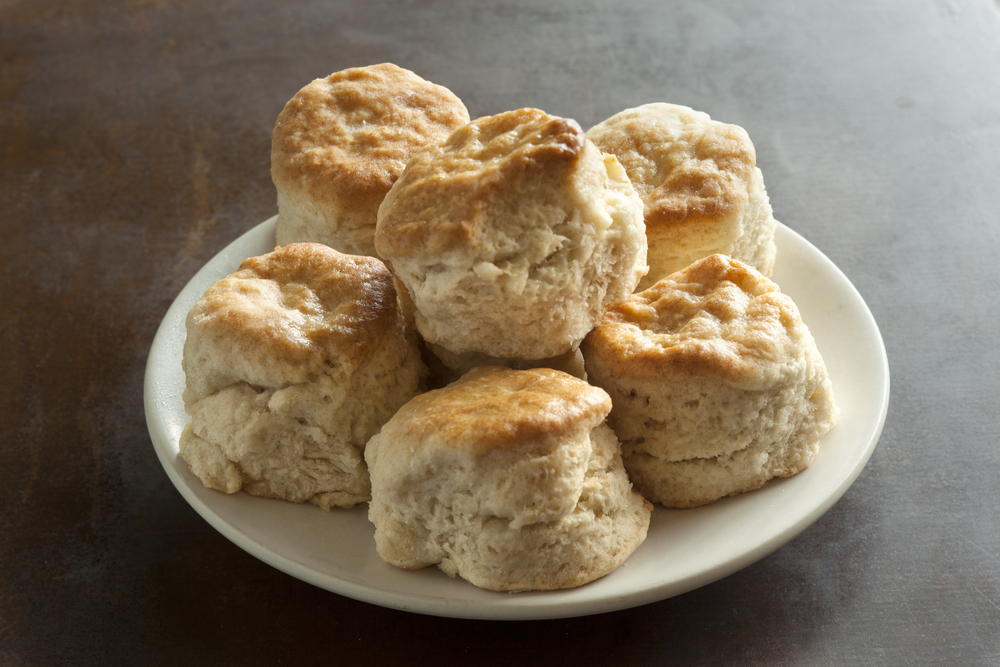
Baking powder biscuits are super versatile. I love how many ways there are to change them up and serve them. Let me share some of my favorite ideas with you.
Biscuit Types
I often make buttermilk biscuits for a tangy twist. They’re so good! To make them, I just swap the regular milk for buttermilk. It’s that easy.
For a sweeter treat, I turn my biscuits into shortcakes. I add a bit more sugar to the dough and top them with fresh fruit and whipped cream. Yum!
Sometimes I brush the tops with an egg wash before baking. This gives them a nice golden shine.
When I’m feeling fancy, I fold grated cheese or chopped herbs into the dough. It adds great flavor and makes them perfect for savory dishes.
Savory and Sweet Toppings
My favorite way to eat biscuits is in a biscuit breakfast sandwich. I split them open and add eggs, cheese, and bacon. So good!
For a classic Southern meal, I make biscuits and gravy. The creamy sausage gravy is perfect with fluffy biscuits.
On the sweet side, I love spreading room-temperature butter and honey on warm biscuits. It’s simple but delicious.
Fruit preserves are another tasty option. I like to use homemade jam when I have it.
Side Dishes
Biscuits go great with so many meals. I often serve them alongside soups or stews. They’re perfect for soaking up all the yummy broth.
For breakfast, I pair them with scrambled eggs and bacon. It’s one of my favorite weekend treats.
In the summer, I like to have biscuits with fresh fruit salad. The mix of textures is really nice.
When I make chili, biscuits are always on the menu. They’re great for scooping up every last bit from the bowl.
Serving and Storage
Baking powder biscuits are best enjoyed fresh, but there are ways to keep them tasty for later. I’ll share some tips on serving, storing, and reheating these fluffy treats.
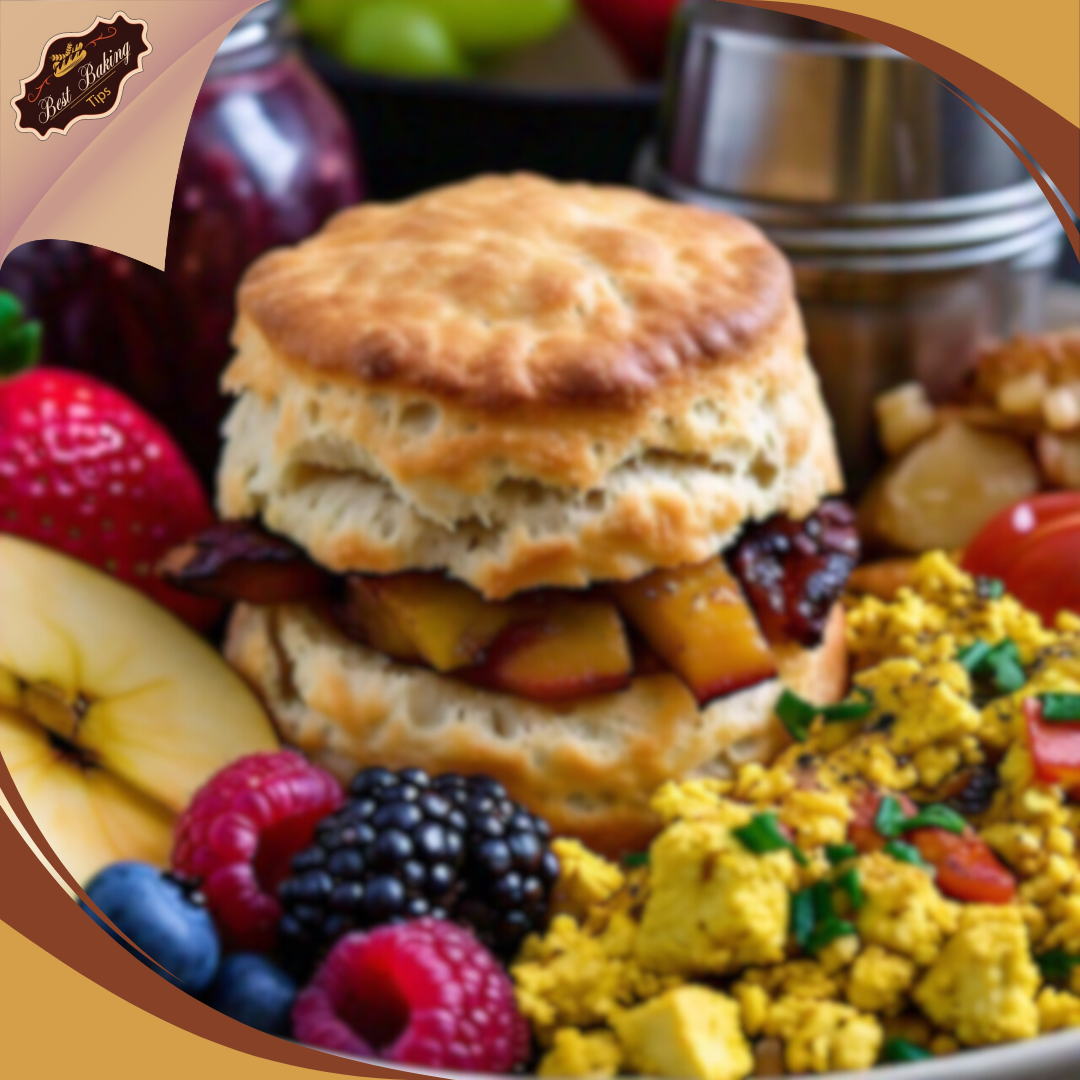
Best Practices
I always serve my biscuits warm for the best taste and texture. Right out of the oven is ideal, but I can keep them warm for about 30 minutes in a cloth-lined basket. For a special touch, I like to brush the tops with melted butter before serving.
Biscuits are great on their own, but they’re even better with toppings. Here are some of my favorites:
- Butter and honey
- Jam or jelly
- Gravy (especially sausage gravy)
- Eggs and cheese for a breakfast sandwich
I find that tender biscuits pair well with hearty soups and stews too. They’re perfect for soaking up all those tasty flavors!
Storing Leftovers
To keep my baking powder biscuits fresh, I follow these steps:
- Let them cool completely
- Place in an airtight container or zip-top bag
- Store at room temperature for 1-2 days
For longer storage, I freeze them:
- Wrap each biscuit in plastic wrap
- Place in a freezer bag
- Freeze for up to 3 months
I label the bag with the date so I know when I made them. This helps me keep track of freshness.
Reheating Options
When I want to enjoy my leftover biscuits, I have a few reheating methods:
Oven method: I preheat to 350°F, wrap biscuits in foil, and heat for 5-7 minutes. This gives me that fresh-baked taste.
Microwave method: For a quick fix, I wrap a biscuit in a damp paper towel and microwave for 15-20 seconds. It’s fast, but the texture isn’t quite the same as oven-reheating.
Toaster method: I slice biscuits in half and toast them. This gives a nice crispy texture, perfect for butter and jam.
For frozen biscuits, I thaw them overnight in the fridge before reheating. In a pinch, I can reheat from frozen, but it takes a bit longer.
Perfect Baking Powder Biscuits: Your Go-To Comfort Recipe
Mastering perfect baking powder biscuits opens up a world of warm, homemade comfort for every meal. By using cold ingredients, working with a light touch, and baking at high heat, you’re set to create fluffy, golden biscuits that are just as at home with sweet jams as they are with savory spreads. These biscuits have a versatility that can fit many dietary preferences, and they bring a wholesome, homemade quality to any table.
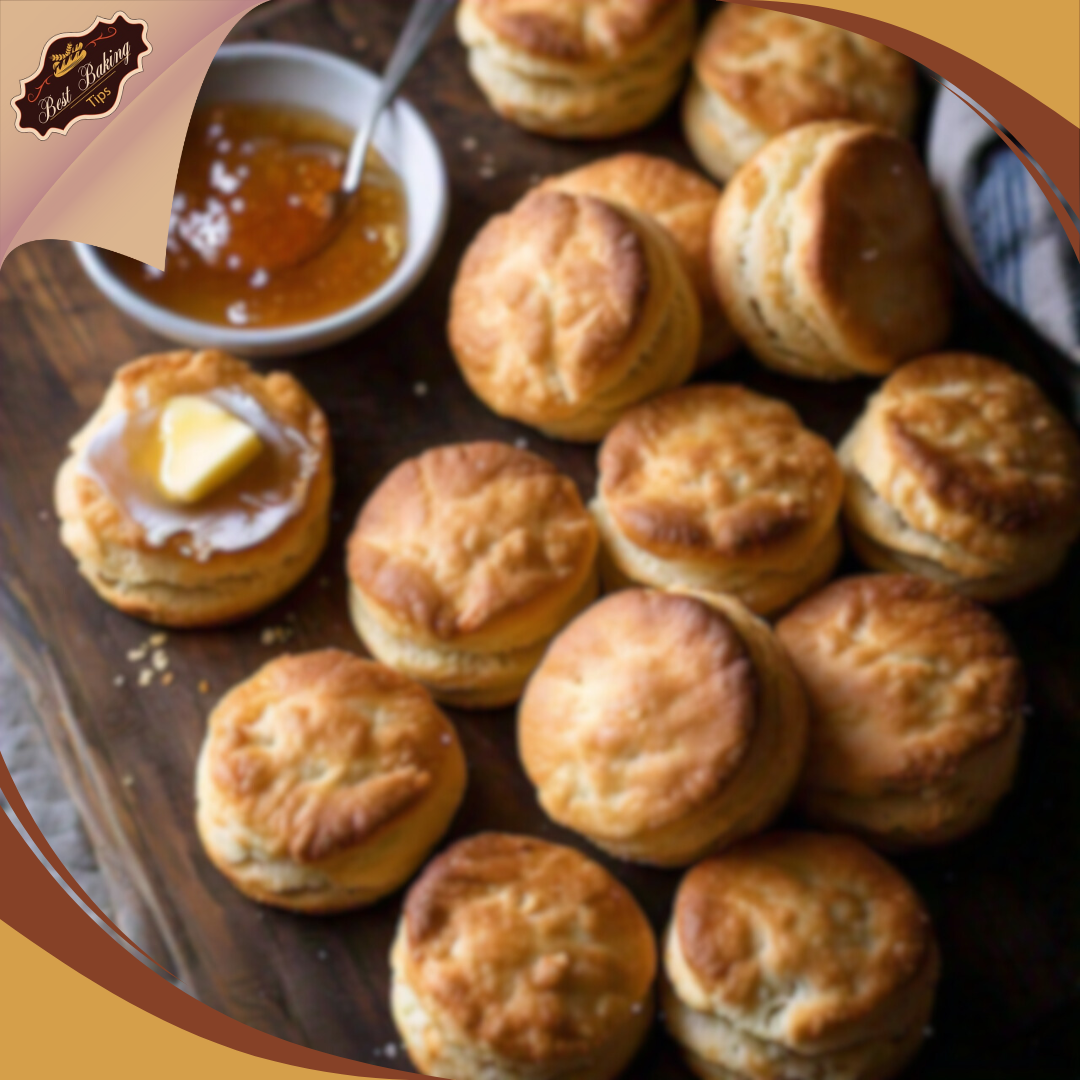
Whether you’re serving them up for a cozy breakfast, pairing them with dinner, or celebrating a special holiday, baking these biscuits is a simple way to add a warm touch to any gathering. So, roll up your sleeves and give it a try—your perfect batch of baking powder biscuits is waiting. Happy baking, and may your kitchen be filled with the delicious aroma of fresh biscuits!
Frequently Asked Questions
Making perfect baking powder biscuits involves using the right techniques and ingredients. Here are some common questions I get about baking these delicious treats.
What is the key to making biscuits flaky and tender with a high rise?
The secret is cold ingredients and minimal handling. I always use very cold butter and milk. I mix the dough just until it comes together, being careful not to overwork it. This keeps the butter in small pieces, creating flaky layers as the biscuits bake.
How can I make these biscuits vegan?
To make vegan biscuits, I swap out the dairy. I use plant-based milk like almond or oat milk instead of regular milk. For the butter, I use a vegan butter substitute or coconut oil. The rest of the recipe stays the same.
Can you substitute milk with other liquids in baking powder biscuit recipes?
Yes, I can use other liquids. Buttermilk gives a tangy flavor and tender texture. For a non-dairy option, I use unsweetened almond milk or coconut milk. In a pinch, I’ve even used water, though the biscuits aren’t as rich.
What are the best tips for ensuring biscuits made with baking powder rise properly?
For a good rise, I make sure my baking powder is fresh. I roll the dough to about 1/2 inch thick and don’t twist the cutter when cutting out biscuits. This helps them rise straight up. I also place the biscuits close together on the baking sheet.
How do you avoid using too much baking powder in biscuit recipes?
I stick to the recipe. Too much baking powder can make biscuits taste bitter. A good rule is 1 to 1 1/2 teaspoons of baking powder per cup of flour. I always measure carefully to avoid overdoing it.
What are some simple ingredients for making a basic biscuit recipe?
For basic biscuits, I use flour, baking powder, salt, butter, and milk. That’s it! Some recipes add a bit of sugar for sweetness. I mix the dry ingredients, cut in the butter, then stir in the milk. Simple and delicious!
Is there a difference in outcome when using baking powder versus baking soda in biscuit recipes?
Yes, there’s a big difference. I use baking powder for most biscuit recipes. It contains both an acid and a base, so it works on its own. Baking soda needs an acid like buttermilk to work. Baking powder gives a more reliable rise in standard biscuit recipes.

